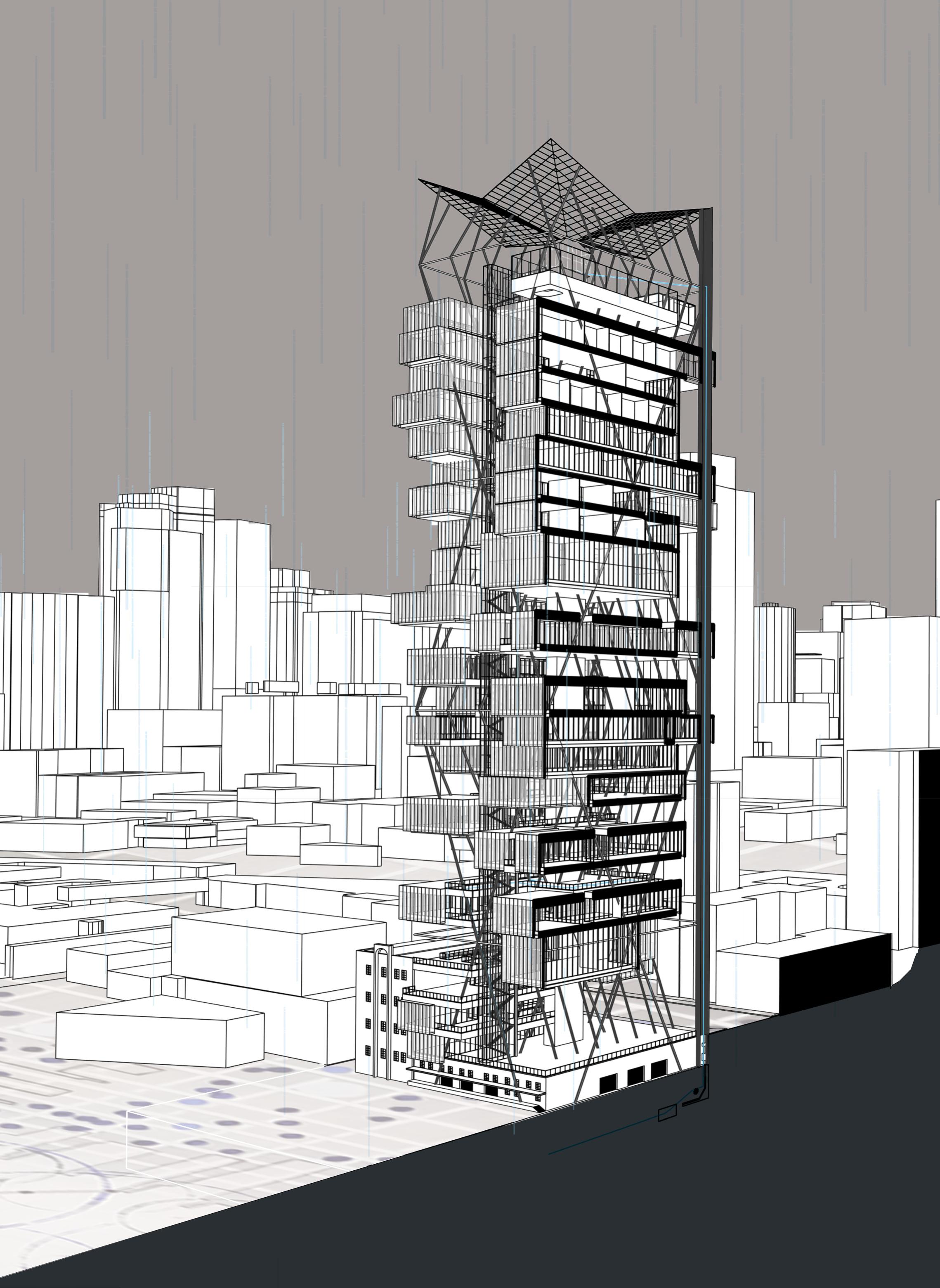
1 minute read
Puget Tower
Seattle, WA
Skyscraper | Mixed-Use | Hydro View Priority | Biophilia
Advertisement
Objectives
Develop a logical structure which will serve the Seattlecommunityforyearstocomebyadapting contemporary practices and digital modeling softwares. Required programming, 150K square feet, and minimum height requirement of 500 ft.
outcome tools
Structural design that implements a steel diagrid that accommodates a double skin envelope. Unique form developed with focus on preserving view access of Elliot Bay for existing buildings along Seattle Waterfront. Conceptual framework for rainwater harvesting and hydro energy production.
Revit|RhinoInsideRevit|Grasshopper|Photoshop
University of Idaho | Summer 2022

Hydro Hypothesis
Hydro Hypothesis


The potential for energy harvesting onsite from the hydro system is immense. One hour of moderate rainfall produces 0.2-0.3 inches of rain. Using 0.25 inches as the value for calculations, A Pelton turbine being fed by a 14,400 sq foot catchment area collecting .25” over an hour (flow rate of 37.83 GPM), falling from 520 feet, can generate 3.3 kW per second.With3,600secondsinthathour, the power generation potential sits around 11,862 kW.
The potential for energy harvesting onsite from the hydro system is immense. One hour of moderate rainfall produces 0.2-0.3 inches of rain. Using 0.25 inches as the value for calculations, A Pelton turbine being fed by a 14,400 sq foot catchment area collecting .25” over an hour (flow rate of 37.83 GPM), falling from 520 feet, can generate 3.3 kW per second.With3,600secondsinthathour, the power generation potential sits around 11,862 kW.
Seattle receives approximately 38.19 inches of rain per year, which can be divided into 152.76-quarter inches. Now rain may not be constantly falling at a rate of .25 inches per hour, but the tank just below the catchment area is programmed to regulate the release of thewatertomaximizepowergeneration. Intermsofpowerpotential,usingthis.25 inch an hour as the example value, the building can generate approximately 1,812,039.12 kW a year, which translates to an available 6,182,934,787 BTU/hr.
Seattle receives approximately 38.19 inches of rain per year, which can be divided into 152.76-quarter inches. Now rain may not be constantly falling at a rate of .25 inches per hour, but the tank just below the catchment area is programmed to regulate the release of thewatertomaximizepowergeneration. Intermsofpowerpotential,usingthis.25 inch an hour as the example value, the building can generate approximately 1,812,039.12 kW a year, which translates to an available 6,182,934,787 BTU/hr.














